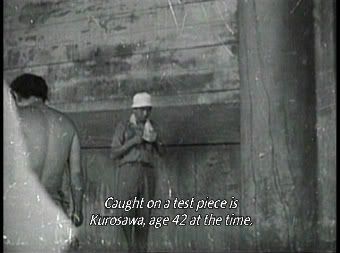Mr_sausage wrote:At its heart is a very human issue, and the problem is not in discovering who is right or who is most truthful, but to analyse and understand the various personalities and how each person has constructed their own reality--what in them has coloured their perception? How much is intentional; how much not?
I think that is an excellent interpretation. It is a very interesting issue about how perception can create one absolute truth for one person and one completely different for another. The only thing for certain is that Takehiro is dead, and each of the retellings is less the 'truth' that is revealed to be a 'lie' but a reflection of each storyteller's perception of events filtered through their psyche and the distance of memory. It is interesting to see how each storyteller portrays themselves in their recollection, and then how they portray the other two, because in a sense the other two characters are as much of a projection of the storytellers ideas about them and the reasoning behind their actions as the storyteller's portrayal of him or herself is.
You get a good insight into the societal ideas of honour that influence the way the characters see themselves and others: such as the honourable fight vs an almost funny sequence of attacking and running off. It seems to me as a viewer more realistic than the honourable stand-off, but this is just my own way as a viewer of placing my interpretation on the event, by being in the position of being able to pick and choose between interpretations. But I have just chosen the one that I find suits my interpretation of events better. I think it is a great achievement to bring the audience this deeply into the central question of the film where they question their interpretation and
why they think that.
You also get the question of loyalty of Takehiro to his charge; as well as the role of women in the society with Masako - whether she was raped, but stayed loyal to Takehiro (which might be more societally acceptable) or chose Tajomaru for a quick thrill, or wanted to escape her restrictive life and siezed the opportunity of the attack, or never was attacked! There is the sense that the storytellers face the pressure of having to prove that they acted correctly according to the codes of conduct of the time in which they lived. You can almost see the different weighting each of the three gives the other two in their stories, dependent on how they felt about them.
And then you have the storytellers outside of the main action taking the story and placing their own interpretations on it which brings up the issues of both an individual and societal reaction to an event - for example when the priest and woodcutter are talking about it being so terrible at the beginning of the film, you get the sense that they are in the process of using the case as a symbol of the problems in their society, of which the destroyed gate is a physical symbol. You see a similar thing in the media and newspapers - each placing their own interpretation on an event to suit their own world-view or as a metanym (thanks to Gene Youngblood for describing the definition of metanym as 'part standing for the whole' in the L'Avventura commentary!).
harri wrote:I kept getting the feeling that the film was maybe born out of Kurosawa second guessing his intentions in directing itself. Maybe exposing an inner distrust of filmic manipulations... I was wondering if anyone else got this impression.
I think you are onto something there. I think Kurosawa wants us to question the way we view film, but I think he is trying to make a point about human perception and interpretation of events on a much broader scale as well. In a sense, film is the perfect medium for this discussion due to the very concrete way in which images are fixed in a certain order, with certain actors, acting style, choice of locations, music etc. To make a film about this subject in a way necessarily challenges the traditional process of filmmaking itself and I think is what made it so groundbreaking and influential.

